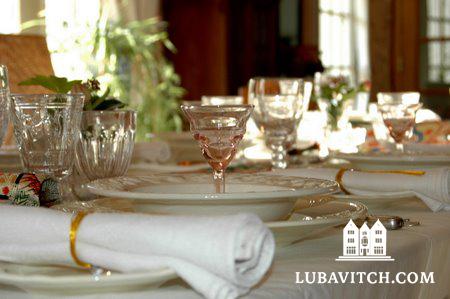Make for me a sanctuary and I will dwell among them (Exodus 25:8)
As teenagers go, the boys and girls of Chabad are unusually well-traveled. Every summer they are recruited by Chabad emissaries from Norway to New Zealand to volunteer at the popular Gan Israel day camps. They are called again for winter camps and to help during other Chabad events in the course of the year, becoming frequent flyers at a relatively young age.
I too, enjoyed this rite-of-passage of sorts in my teen years. For a girl who’d never left New York, I had a feeling I wasn’t in Brooklyn when I got to Kansas. I spent two years working at Lubavitch House in Minnesota where the winters were frigid and the people were chipper for no apparent reason. And when I crossed the Great Plains and got to sunny California where the fruit grows, I understood the power of place.
Those were memorable days, and the opportunity I had to spend time with the motley mix of people who came often to Chabad, was eye-opening. In particular, I looked forward all week to those unhurried Shabbat dinners where, with others from backgrounds very different to my own, we would linger at the table for hours. The food was warm, the conversations were rich and thought-provoking. Learning about the life journeys and the spiritual quests of the people I met was fascinating to me.
We were counselors and teachers, and were thus busy with many community projects. We also participated in regular lectures and study sessions. But I learned more, and I suspect the others did too, by observing the domestic lives of the shluchim and their children, and how they interfaced with the eclectic souls who gravitated to them. The various ways they negotiated healthy boundaries while keeping an open and welcoming home were illuminating. In retrospect, it was during those memorable Shabbat dinners and the hours we spent in the kitchen preparing, where I observed real change happen.
It is now more than fifty years since the first Chabad-Lubavitch House entered the scene. A new concept at the time, it offered people living nearby or just passing through a stabilizing anchor in the home of the shluchim. Stunning in its simplicity, the model—a brilliant template for creating community and connections to oneself, to others, to G-d—would subsequently be repeated in thousands of communities and continues today in ninety-two countries.
In his keen understanding of human nature, the Rebbe recognized that—the important place of prayer and the synagogue in the Jewish community notwithstanding—home is where the heart is. Not everyone will come to services, but most will accept a personal invitation to dinner. He reminded us that spirituality is centered in the home, and that life-changing moments will happen in its sacred space at the table. For the Rebbe, there could never be too many homes illuminated with the glow of the Shabbat candles beckoning from the windows.
I think about this as I visit Chabad communities in the U.S. and abroad where positive trends of engagement in Jewish life are strong. While synagogues are seeing a concerning drop-off in attendance, Chabad Houses are bursting at the seams, expanding and building at a steady clip.
But they all begin at the kitchen table in the shluchim’s apartment—the Chabad House before it becomes the Chabad Center. Here, shluchim bond with the Jewish souls they went looking for, counting each one a precious find. In retrospect, it is hard to imagine how painstaking and impossible the challenge seemed, how unlikely that they would ever reach critical mass.
On a recent visit to Charleston, South Carolina, I saw the Rebbe’s model of the Chabad House translated into the architectural design of a new Chabad Center. Scaled to allow for many more people, it maintains the intimacy of the shluchim’s home, with the kitchen and dining room at the center of the new space.
As I spoke to the people who collaborated with their Chabad representatives on this project, I understood: they are not visitors and this was not a dispensary. Chabad, it was clear, had become their home. In this sacred space they created together, their children will grow into their Jewish identity with a love for Jewish life and a personal stake in its future.
The future looks good.

Be the first to write a comment.